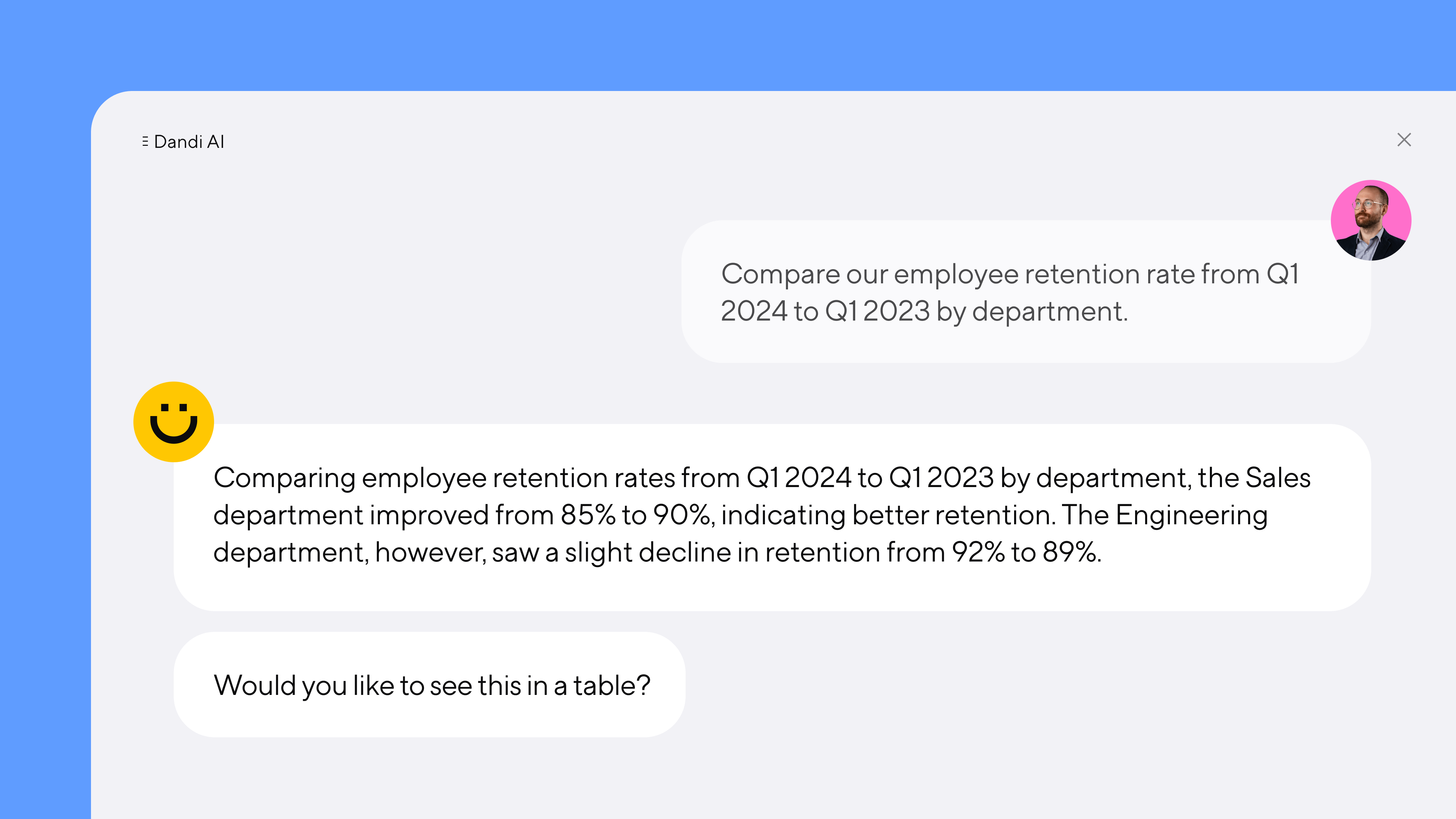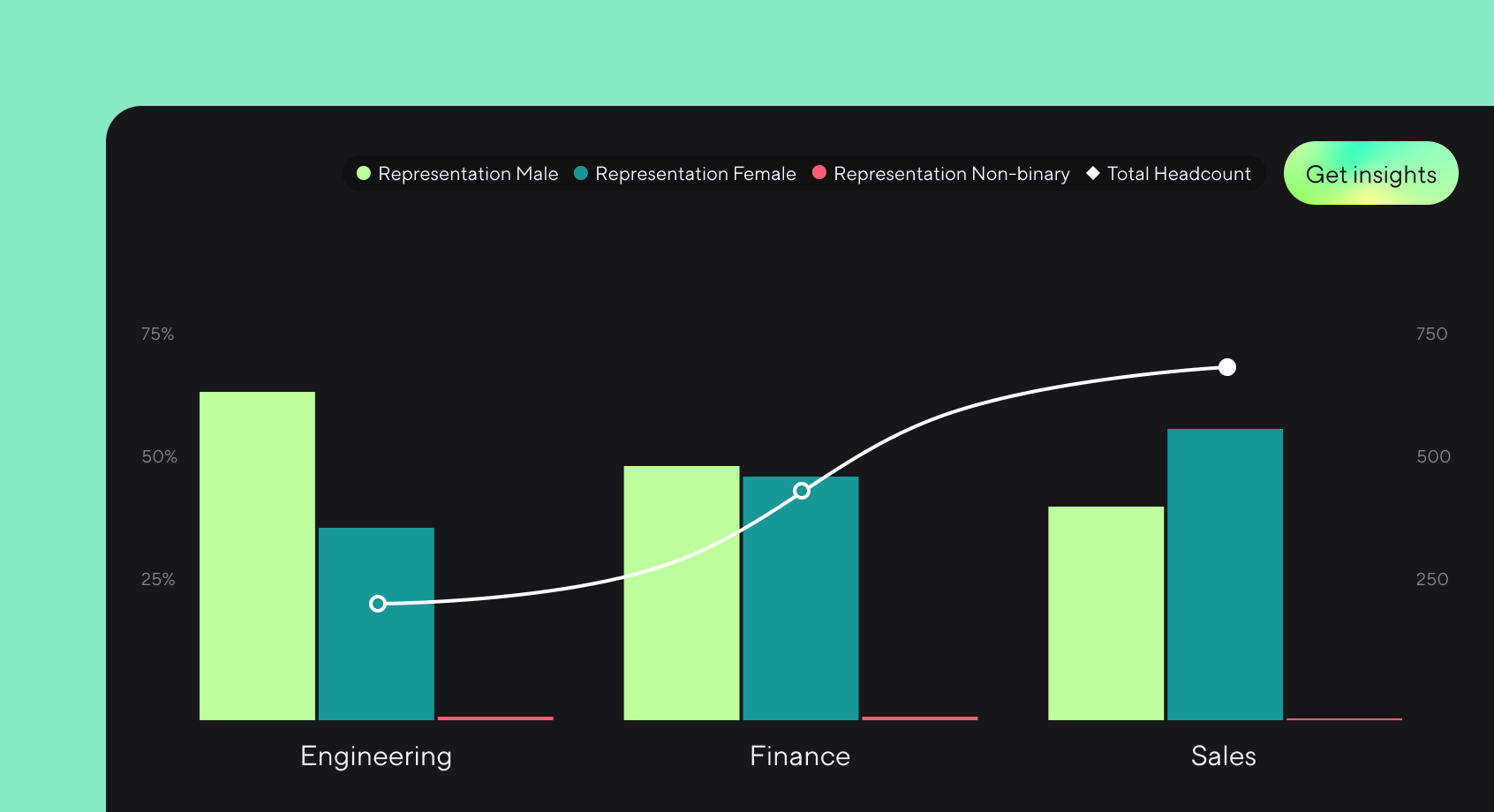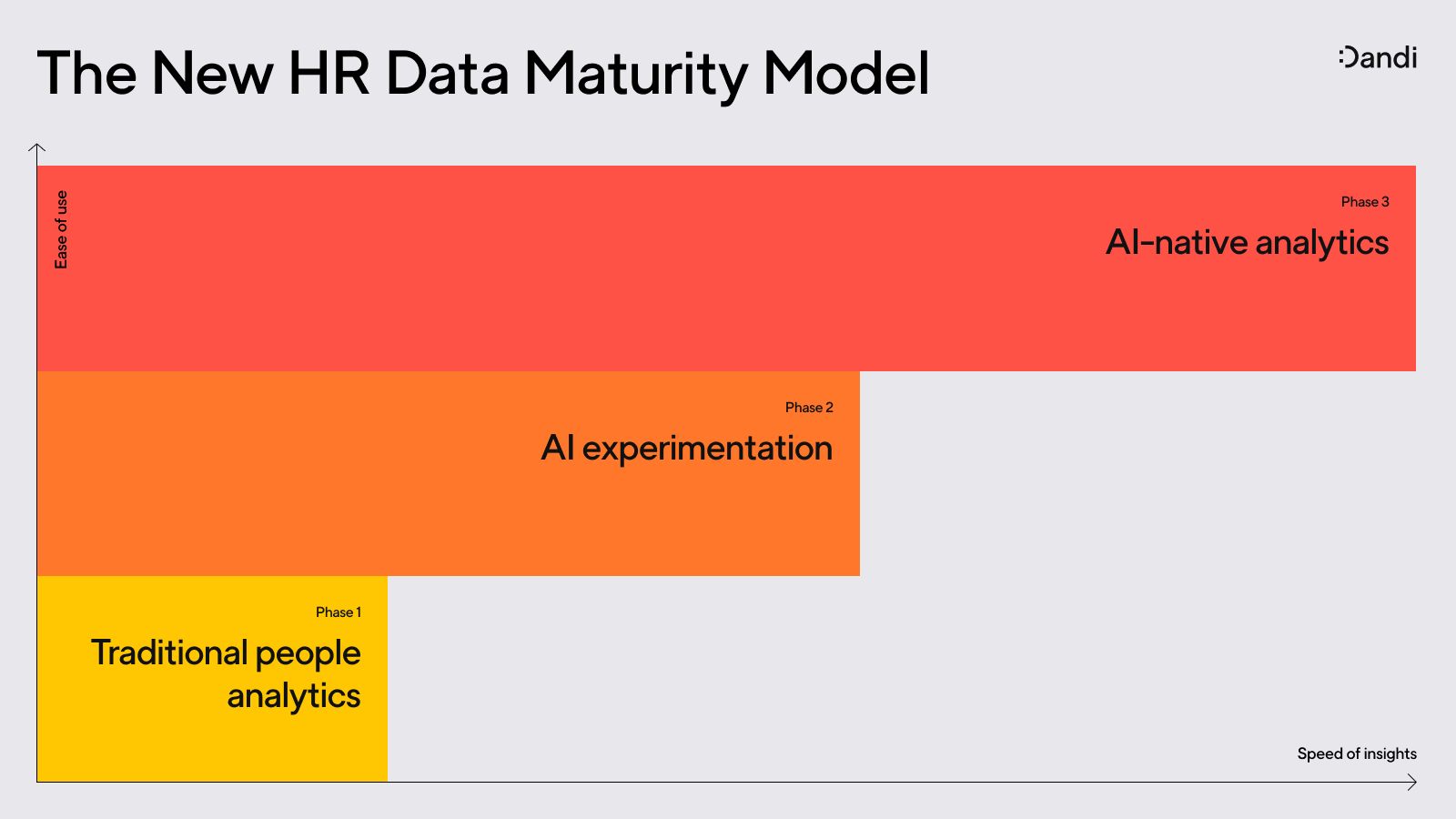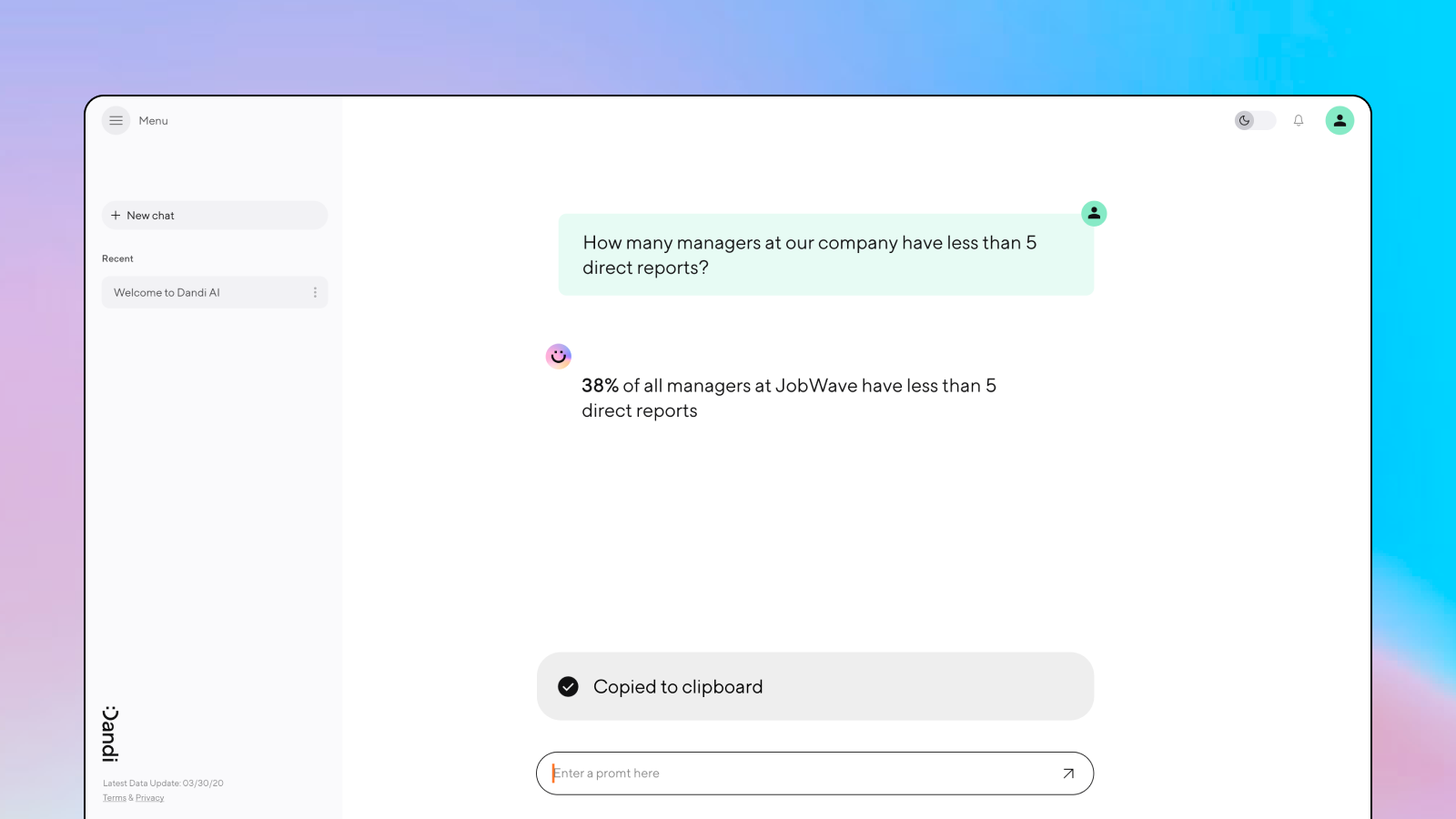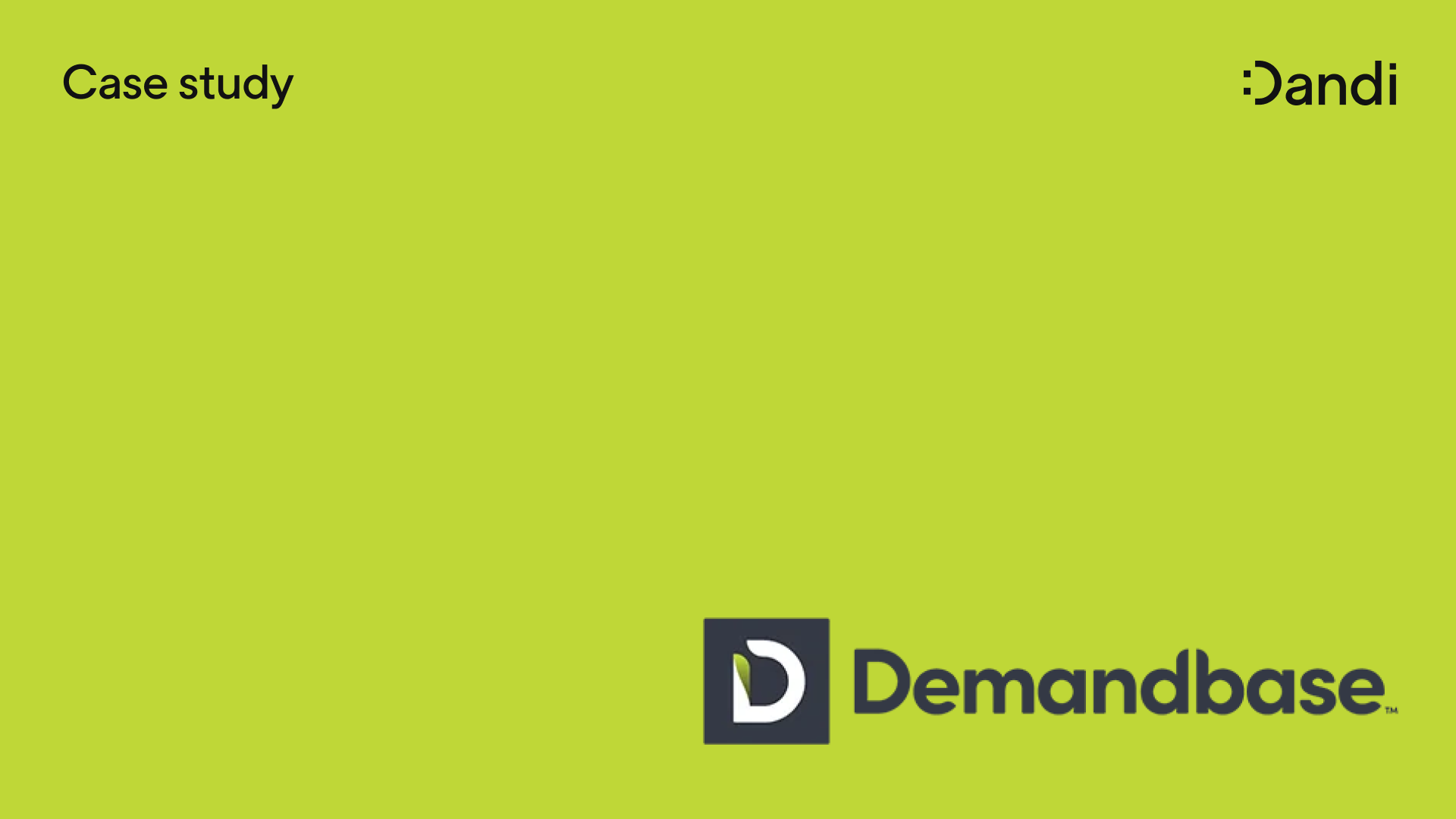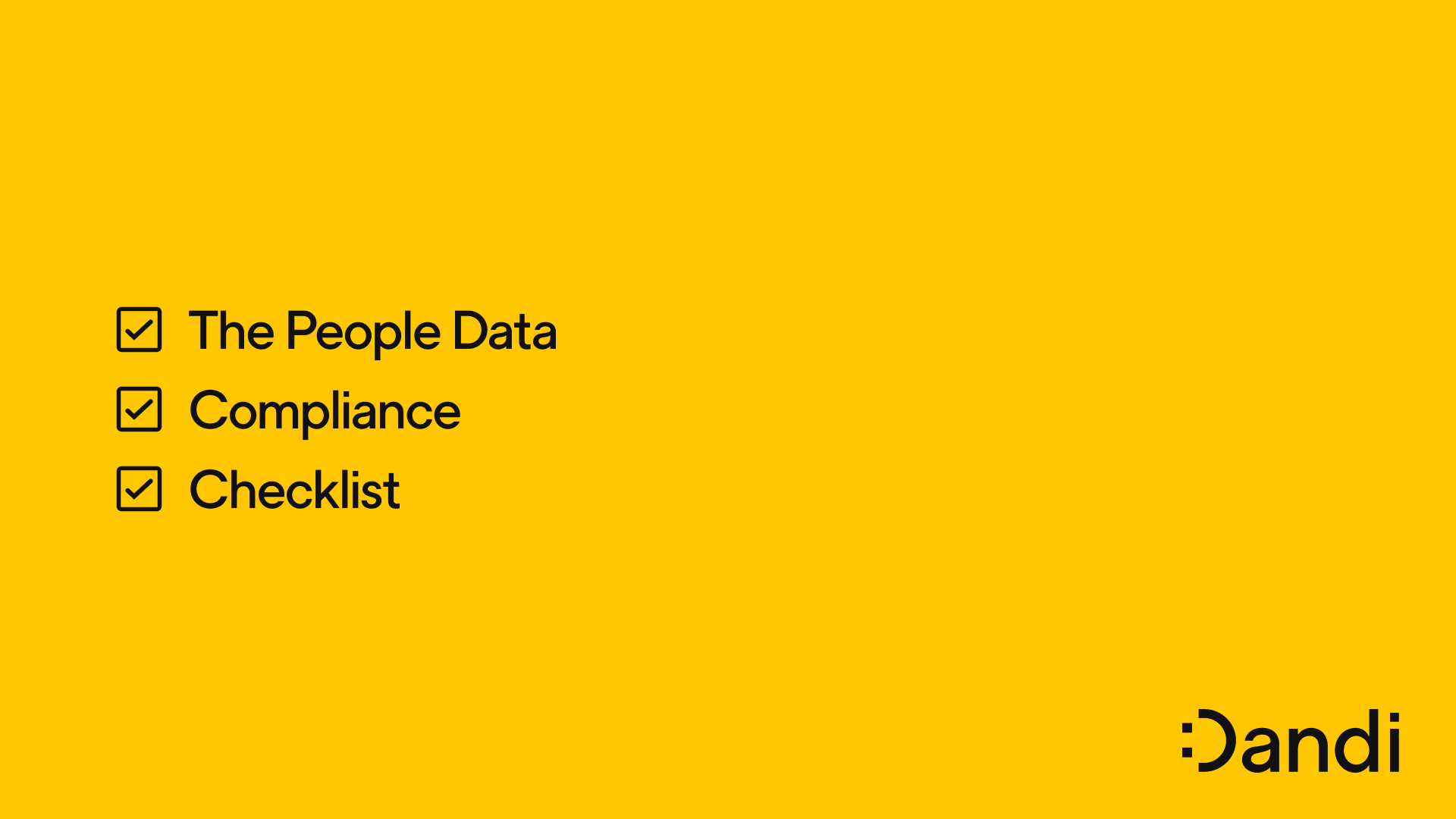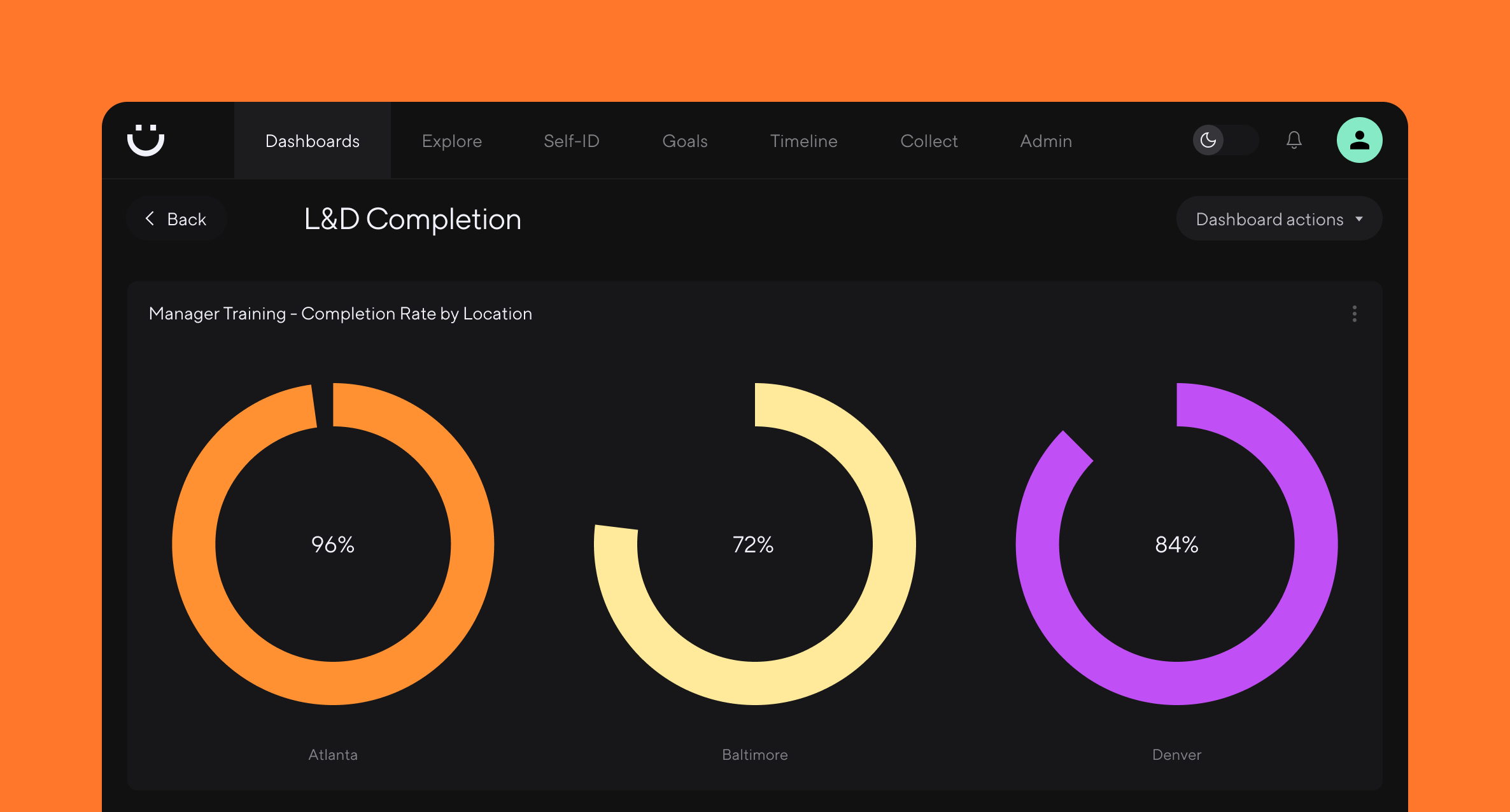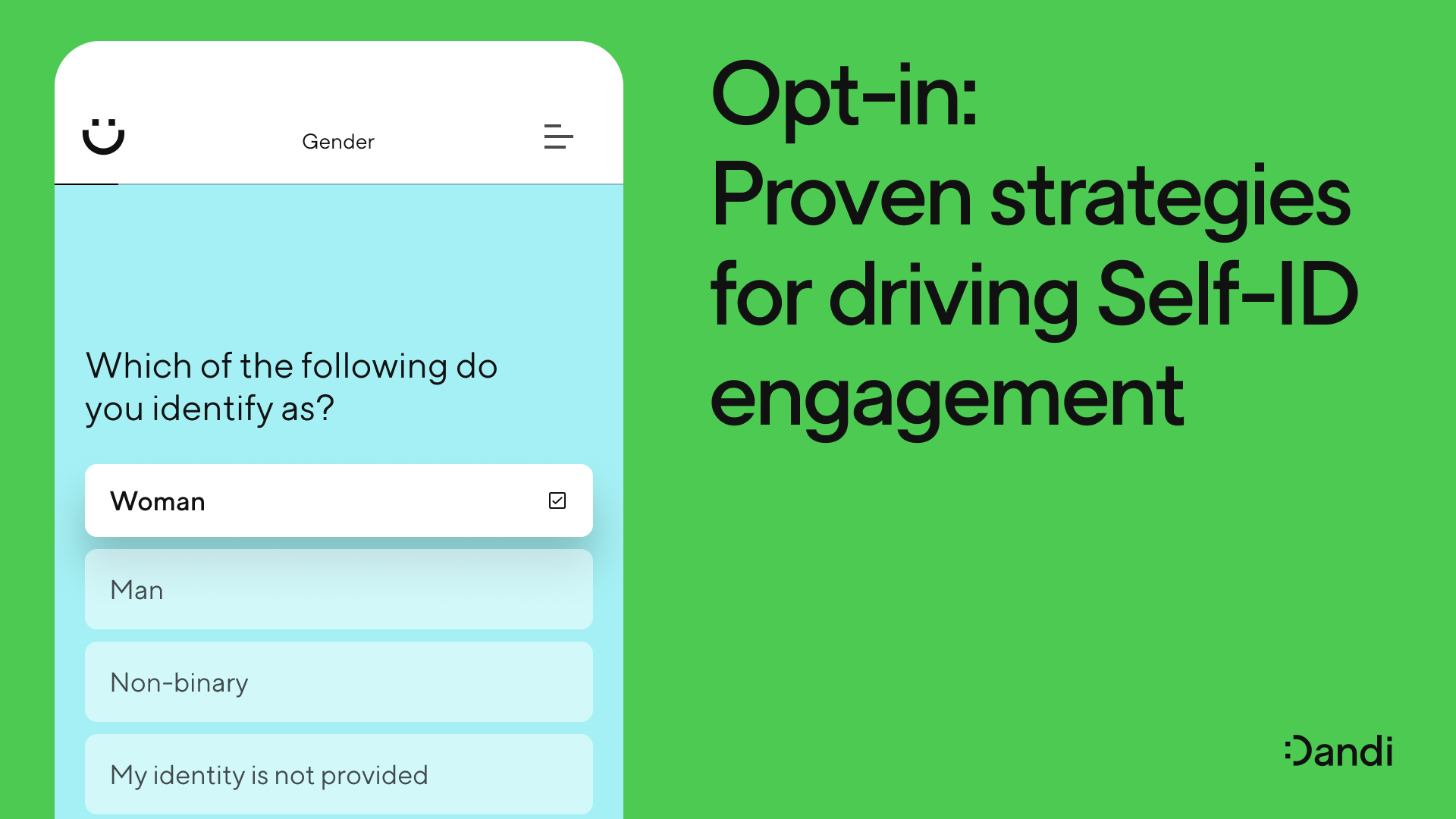Dandi Insights: In-Person vs. Remote
Catherine Tansey – Jun 10th, 2024
For the first time ever, Dandi is revealing insights based on data from across our user base. To begin, we're examining how in-person and remote work changed before and after the pandemic.

There's no doubt that the pandemic forever changed work. The question is: how?
Except for the select few, pre-pandemic work meant going to work—no longer the case today. The swift shift to remote work showed that businesses could function without physical offices, altering our perspectives, beliefs, and values about work, as well as our willingness to compromise.
Now, four years after worldwide lockdowns, the ripple effects are still being felt in workplaces around the world. And as HR leaders try to understand the “new normal” of work, some basic questions remain about how to create a culture that attracts and retains top talent.
“The post-2020 workplace has not settled,” says Jeff Fernandez, CEO and co-founder at Dandi. “Companies are still trying to figure out what is best for them. And in a lot of circumstances, they're finding that what they believe is right clashes with what employees feel is right,” Fernandez adds.
For the first time ever, Dandi is sharing aggregate customer data to shed light on the state of work today—and the insights may surprise you.
Sourced across Dandi customer accounts, this data reveals powerful trends about why employees stay—and leave.

The post-2020 workplace has not settled. Companies and employees are still trying to figure out what works best for them.
Jeff Fernandez, Co-founder and CEO, Dandi
Once upon a time, remote work was a surefire retention hook
A sure retention tool pre-COVID? Remote work. Dandi´s data from 2019 reveals a significant gap in attrition between in-house and remote employees, with attrition rates 2.75X higher for in-person employees.
“Pre-COVID, remote workers were somehow ‘safer’ from attrition, with remote employees having a significantly lower attrition rate,” says Eric Walisko, data scientist at Dandi.
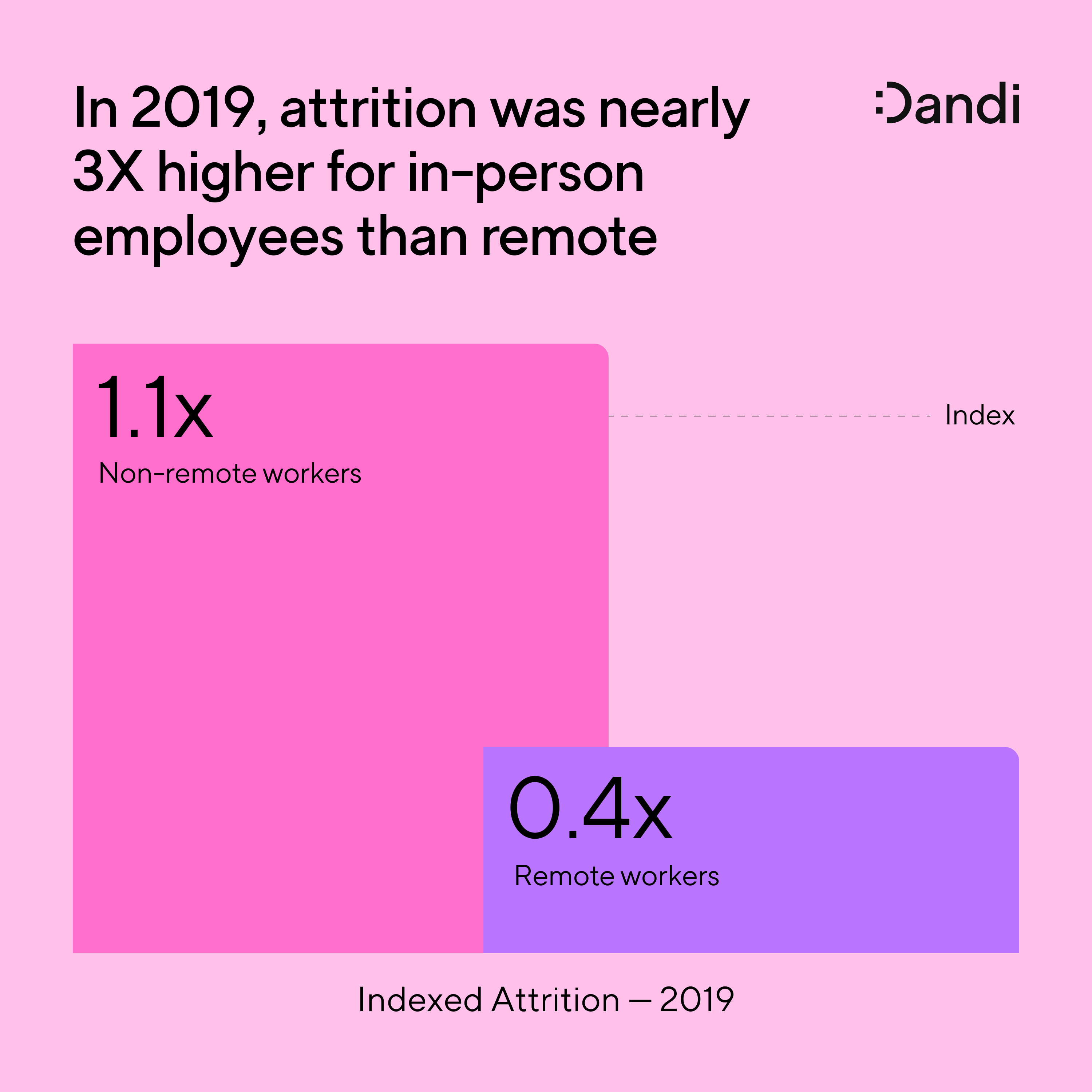
Since remote jobs were offered less frequently than in-person jobs, it’s possible that people who had secured remote work were reluctant to give up these roles.
“Today there seems to be a lot of strife on both parties' part. I don't think there are a lot of companies where leaders and employees would say, we nailed it. We're all really happy with the paradigm we´re working in now. In 2019, that just wasn't the case. Remote work was a thing, but a relatively uncommon one compared people who commuted to the office X days a week,” says Ryan Schell, VP of Revenue and co-founder at Dandi.
COVID turned hiring upside down
COVID drove a dramatic spike in remote hiring across most Dandi customers, peaking in 2021 when, for the first time in our data, remote hiring outpaced in-person hiring. The trend held for roughly two quarters before reversing. Today, however, the rate of remote hiring remains higher than the pre-COVID days.
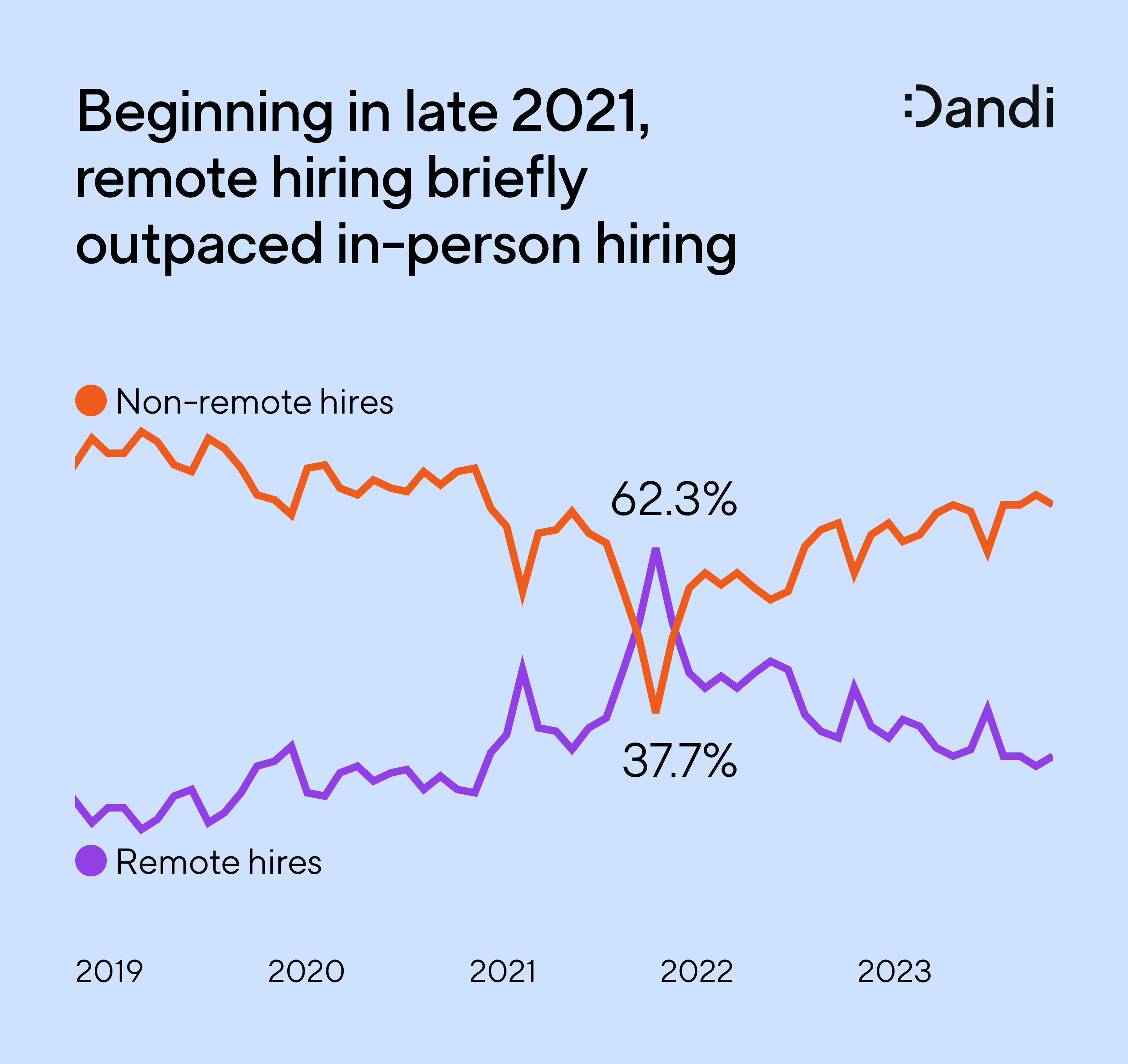
“That data corresponds with all of these companies coming into COVID lockdown policies, thinking remote work was the new normal, and then the retreat away from that,” says Walisko. “It's not an authoritative account across all industries or companies, but there are obvious things we’re seeing in the data,” he adds.
Today, remote work is just “work”
With remote hiring an established trend, remote work is no longer the retention hook it once was. Quite simply, remote work is now just “work,” and remote employees change jobs with the same frequency as their in-person peers.
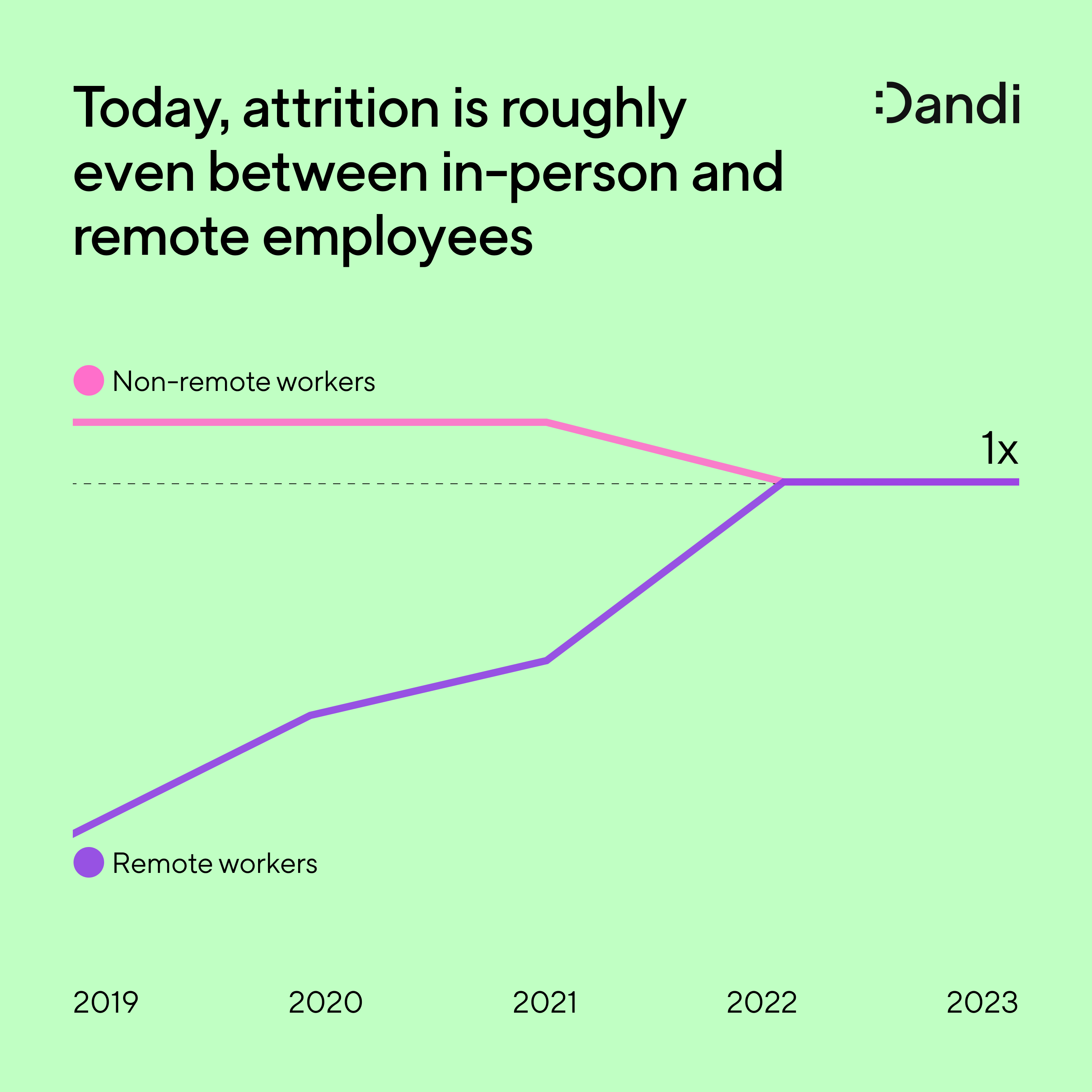
“We can look at it as a market where talent can move more freely. If what you require to move jobs is a remote opportunity, and now there are more of those than before, then your ability to move and transfer talent increases as well,” says Schell. “Now for companies who view holding on to employees as an important north star, that hurts a little bit because this used to be something that kept people for you.”
We think there could be a few reasons for this. As mentioned, pre-pandemic fully remote jobs were harder to come by, and it’s feasible that employees who landed one were more likely to stay put.

The uptick in attrition among remote employees today may be an effect of their newly-expanded professional options.
Eric Walisko, Data Lead, Dandi
Walisko agrees that the uptick in attrition among remote employees today may reflect the expanded professional options for work-from-home loyalists. “Remote workers are no longer confined by their geographical locations, so they can regularly be looking for new jobs,” says Walisko.
It could also be that as companies reconsider remote policies, bringing employees back to the office, those who want to remain remote prefer to seek new employment. As we see companies more firmly settle their work arrangement policies, we may also start to see an uptick in retention among remote workers emerge.
Another consideration is the quality of remote work. To be successful, productive, and fulfilling, remote work requires a separate set of considerations and policies than in-person work.
“Remote work may not be as strong of a retention hook today as it once was because it’s not the same quality of remote work that people were experiencing previously,” says Schell. “For some companies, it's likely that they applied this new concept without putting much thought or effort into how they were going to apply it.”
In-person is now the reigning champ of retention
Among the many factors we’re trying to parse here, one thing is clear: fully in-person companies currently retain talent at a much higher rate than fully remote or hybrid companies. Dandi clients with fully in-person setups have an average retention rate that is 8.9% higher than that of fully or partially-remote workplaces.
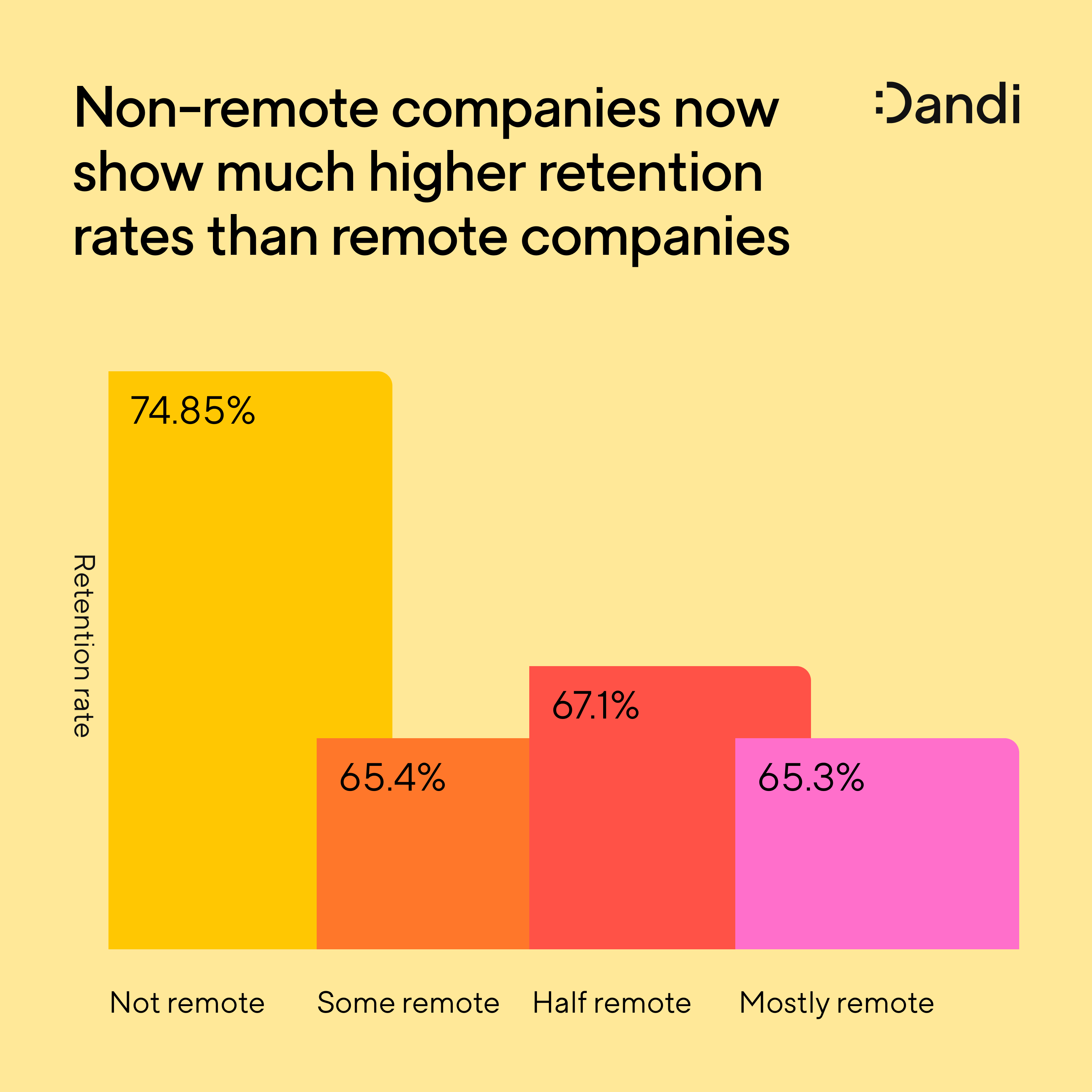
“Many people need the structure of showing up, coming to an office, sitting at their desk, getting their coffee, getting their bacon, egg and cheese, if you’re in New York,” says Jeff Fernandez, Dandi CEO and co-founder.
Anu Mandapati, PHR, PCC, CTPC, Global Head of Culture, DEI & Employee Experience at Magic Leap, notes the physical workspaces of these companies could be a draw. “I'd be curious to also see what these environments look like. If we’re looking at the physical workspace, what is working to be more conducive to brainstorming or collaboration among teams, for example?” she asks. “Maybe these companies are truly asking, ‘what do people need?’ and crafting workplaces that help people want to stay.”
Dandi’s customer data lays bare a stark trend here, but there is no one-size-fits all setup to drive retention, engagement, and success. “Dandi operates as a hybrid workplace, which maps well to our talent strategy of hiring the absolute best people regardless of location,” says Fernandez. “But we´re very intentional about building culture and putting in place processes that enable us to do great work from afar. There´s no doubt that being in person simplifies a lot of that.”
While we're seeing a strong signal here, trends will likely continue to shift over time. “There's no one right answer for all companies, but there is probably a right approach for your company. The key is having the data and insights to determine that, rather than working to replicate another organization's success,” says Schell.

There's never any one right answer to in-person vs. remote. The key is having the data to determine what's best for your company.
Ryan Schell, Co-founder & VP Revenue, Dandi
Fully remote? Hybrid? It doesn't seem to matter.
The various hybrid working arrangements that exist are nuanced, and so is the difference in retention rates across the three setups we looked at. Across Dandi customers, all companies that were remote — whether in a hybrid or fully remote arrangement — had roughly similar retention rates.
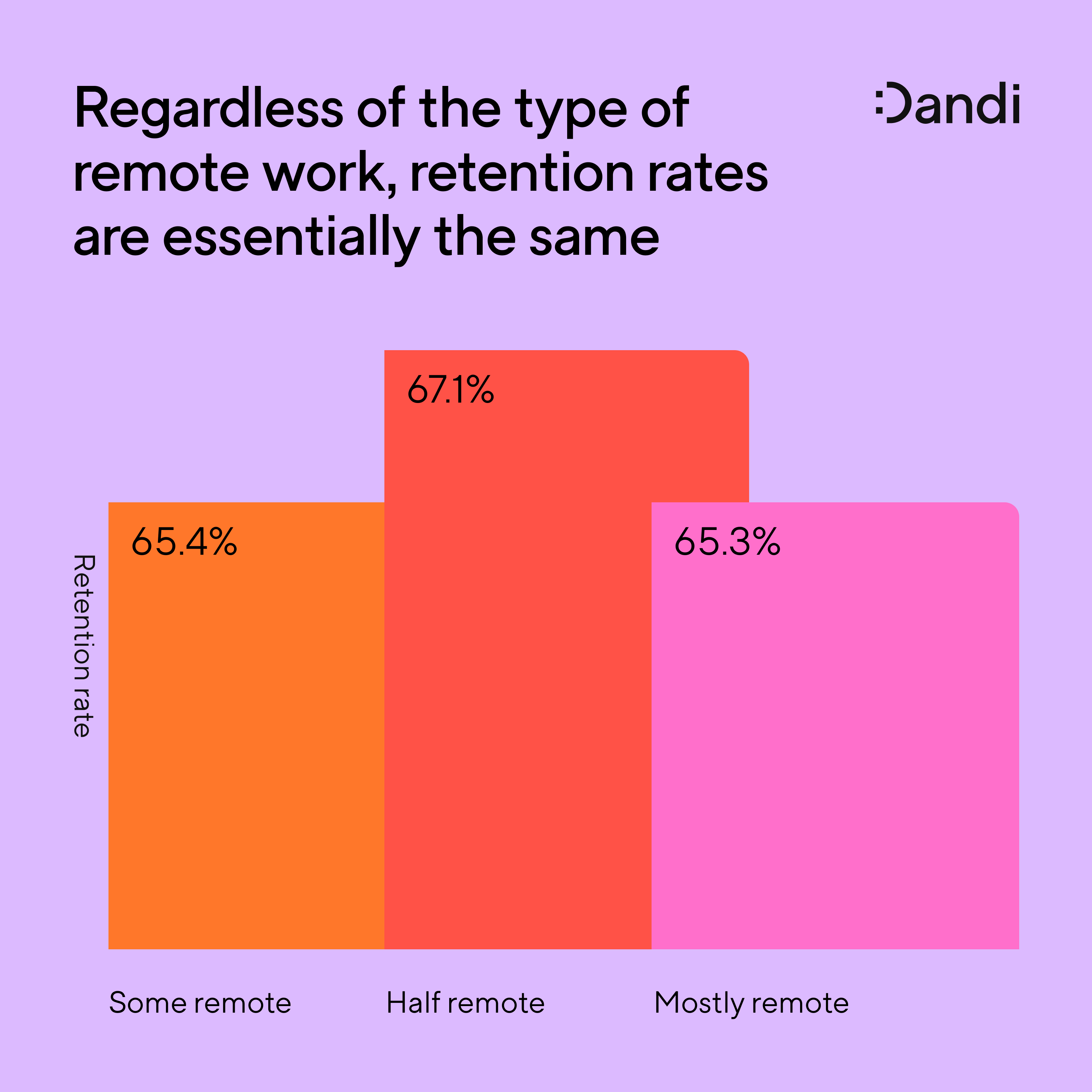
“This is definitely somewhere where we’d like to dig further into the data to understand the discrepancies in retention rates,” says Walisko.
Dandi grouped companies as either not-remote, half-remote, mostly-remote, or some-remote. The average retention rate for fully in-person companies was 74.85% followed by half-remote clocked at 67.15%. Mostly-remote companies’ average retention rate was 65.30% and some-remote organizations landed at 65.40%.
“For remote and hybrid teams, if you want the same productivity that exists in person, you need intrinsically motivated people. You need proper working stations. You need to be able to build that same sort of connection remotely as you would have in person,” he adds.
3 key takeaways
As HR leaders digest these insights, it’s best to remember that what works for each organization will be different. Regardless of how your company handles a return (or not) to office, keep the following top of mind.
1. Regardless of the work arrangement, engagement is key
Magic Leap operates with a hybrid model, which works well for the 1,000+ employee company. Mandapati says her team works hard to focus on engaging employees more so than being concerned about any one working arrangement.
“For the organizations where there's less retention for remote workers, I’d be interested in knowing: What does that performance evaluation process look like? How do managers ensure they’re engaging remote workers on calls in a hybrid team setting? Are remote employees also getting stretch assignments at the same rate of in-person employees? We know proximity bias is real,” says Mandapati.
High levels of employee engagement is linked to everything from higher profitability to better retention. Gallup has found that teams with low levels of engagement have turnover rates that are 18-43% higher than teams with high levels of engagement.
Companies that continue to offer hybrid working arrangements will need creative ways to engage with teams across in-person and remote work. “I think you can feel a high degree of connection with folks and to your company remotely, but I think a lot of companies don't do remote well,” says Fernandez.

Proximity bias is real. Companies must be sure they're engaging remote employees in hybrid settings.
Anu Mandapati, Global Head of Culture, DEI & Employee Experience, Magic Leap
2. Use an employee listening strategy to learn what matters
People teams can’t build out relevant and effective workplace strategies unless they know what’s important to their workforce. “Companies need to be able to answer the engagement question," says Mandapati.
Collecting and analyzing data is the first step to that. “Companies need to go and understand not only what these trends are from a benchmark perspective, but how true these trends are for you,” says Schell.
Mandapati notes that this is a more consistent effort than the cursory annual engagement survey.
“The link between employee data and retention is that when you know what’s most important for people in a specific office, on specific teams, with specific working arrangements. If you create that, I wouldn’t be surprised if there’s a stronger sense of connection, inclusion, belonging, all of which translates to retention,” she says.
3. Data empowers people teams to make the best decision
The data we share here only tells a portion of the story. “What’s most important is getting qualitative and quantitative data that you can look at intersectionality,” says Mandapati.
Looking for gaps allows HR to remedy discrepancies and support engagement. “If we look at total rewards, if we look at sense of belonging, productivity, morale, if we look at all of these pieces, we really should have a 0% differential, be it based on dimensions of diversity or work arrangement style,” adds Mandapati.
Turn complex people questions into clear insights
In the space of just a few years, remote work has gone from a rare, highly-prized benefit, to a commonplace hiring option, to a possible factor in higher rates of employee attrition.
It's been a huge challenge for businesses and employees to navigate this head-spinning change—and the dust still has not settled.
One thing is clear, though: as HR leaders continue to navigate these changes, data is the key to understanding the past, present, and future of your workforce. And this is precisely where we can help.
Dandi is an AI-native workforce intelligence platform that answers people questions across the employee lifecycle. Simple, secure, and globally compliant, Dandi turns complex people data into clear insights.
Want to know more about Dandi? Learn about our powerful AI for HR.
More from the blog
Announcing more powerful Dandi data visualizations
Team Dandi - Oct 23rd, 2024
The New Maturity Model for HR Data
Catherine Tansey - Sep 5th, 2024
Buyer’s Guide: AI for HR Data
Catherine Tansey - Jul 24th, 2024
Powerful people insights, 3X faster
Team Dandi - Jun 18th, 2024
Dandi Insights: In-Person vs. Remote
Catherine Tansey - Jun 10th, 2024
Introducing Dandi AI for HR Data
Team Dandi - May 22nd, 2024
5 essential talent and development dashboards
Catherine Tansey - May 1st, 2024
The people data compliance checklist
Catherine Tansey - Apr 17th, 2024
5 essential EX dashboards
Catherine Tansey - Apr 10th, 2024
Proven strategies for boosting engagement in self-ID campaigns
Catherine Tansey - Mar 27th, 2024
